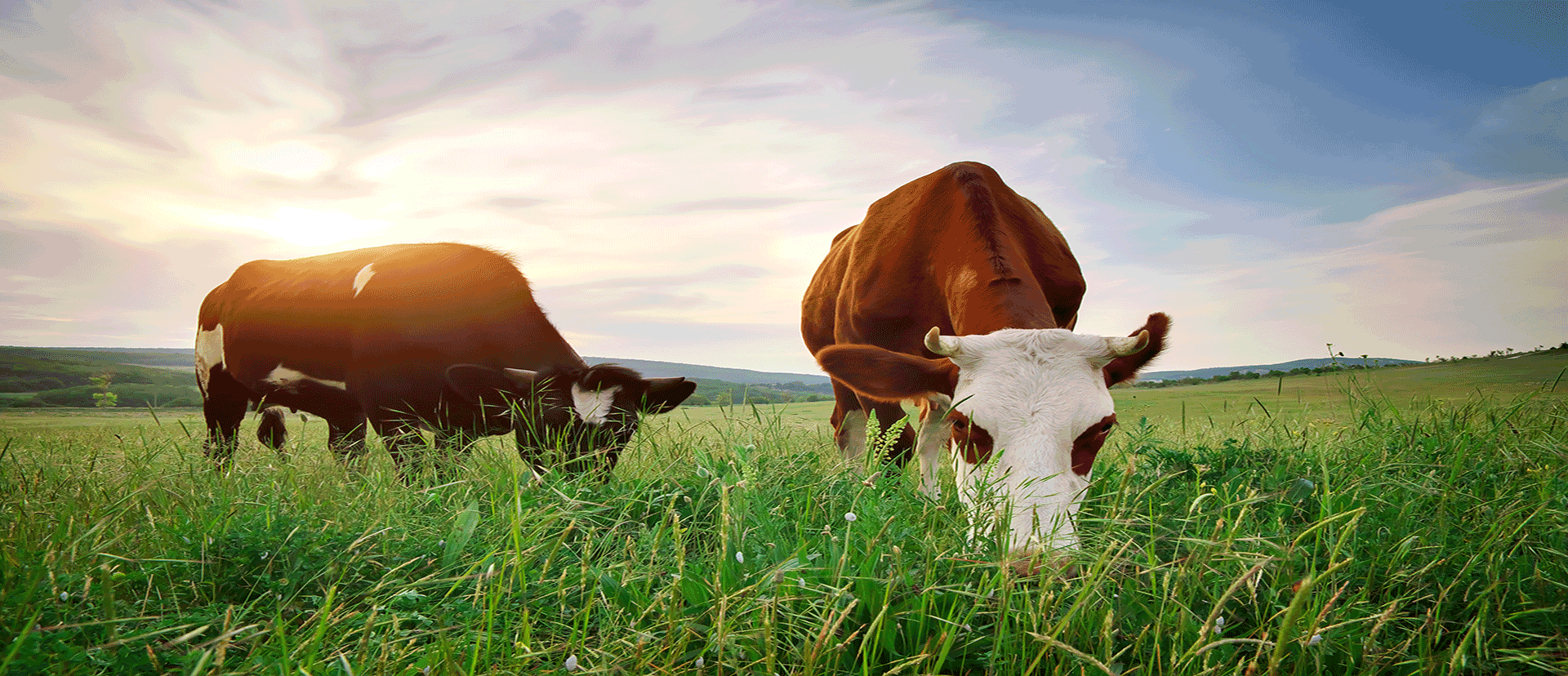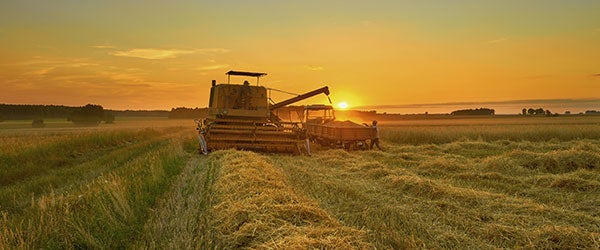
Key takeaways
-
Regenerative agriculture seeks to address the global issues caused by a growing population and widespread soil degradation, which affects roughly 75% of the world’s arable land.
-
While widespread adoption is still in its early days, interest is increasing thanks to a confluence of concerns about climate change, food security and the sustainability of modern farming.
-
A number of industry giants have begun to throw their weight behind regenerative agriculture, and it’s a claim many food makers would like to make for their products.
-
Should consumer interest rise, and as standards develop, regenerative agriculture has significant potential to help steer agriculture in a more sustainable direction.
With leading companies such as General Mills, Land O’Lakes and Danone North America now championing regenerative agriculture, a relatively unknown system of farming has entered the public spotlight. Regenerative agriculture seeks to address the global issues caused by a growing population and widespread soil degradation, which affects roughly three-quarters of the world’s arable land following decades of intensive cultivation practices. The ability of the planet to sustainably feed the world’s population remains a serious concern despite advancements in biotechnology, crop nutrition and field-level precision agricultural solutions.
While the widespread adoption of regenerative agriculture is still in its early days, interest in this approach is gathering steam thanks to a confluence of concerns about climate change, food security and the sustainability of modern farming (see Figure 1). Large food and ingredient players are among the most visible champions of shifting how we manage agriculture’s environmental footprint — not only to protect the resources that make the industry possible to begin with, but also as a means of differentiating their products in a highly competitive market.
Regenerative agricultural practices
Regenerative agriculture represents sweeping changes to the way crops (and livestock) are raised. Key practices that define regenerative agriculture include (see Figure 2):
Diverse crop rotations. Regenerative agriculture emphasizes polyculture (growing multiple crops in rotations over several years) versus monoculture (growing a single crop year after year). This contributes to a healthy soil ecosystem — or soil microbiome — of bacteria, fungi and other organisms.
Limited tillage. Plant residue from previous crops remains on the fields by means of conservation tillage, reducing erosion and runoff.
Managed grazing. When farmers manage when and where livestock graze, plants have a chance to replenish themselves with the manure and plant matter the animals trample into the ground. The result? Better water retention and richer soil.
Composting. Composting entails compliance with U.S. Environmental Protection Agency, water and health regulations. The payoff is a greater ability to keep nutrients cycling through the soil while enhancing the soil’s structure and reducing the need for chemical fertilizers.
Use of cover crops. In regenerative agriculture, cover crops include a mix of at least four different species to promote diversity and biomass production. Planted in years between primary cash crops, cover crops can reduce nitrogen leaching and mitigate wind and water erosion.
Yet another exciting aspect of these practices is that, taken together, they promote carbon sequestration — the process of pulling carbon out of the atmosphere and back into the earth, which is something that plants naturally do through photosynthesis. With its emphasis on continuous plant cover, regenerative agriculture — if practiced widely enough — could be part of the broader set of solutions needed to address climate change.
The view across the farm-to-fork value chain
Companies across sectors are pursuing regenerative agriculture within their own commercial operations.
Food and beverage
Food and beverage makers are practicing regenerative agriculture on their own farmland and making it one of their product-sourcing criteria. For example, after going public in 2019 with its million-acre push for regenerative agriculture, General Mills announced a second initiative to provide incentives for Kansas wheat farmers to take up regenerative practices. Meanwhile, dairy company Danone North America has stepped up its funding for regenerative agricultural practices at dairy farms, with an eye toward using the products for its Dannon and Oikos yogurts. In addition, Hormel-owned Applegate Farms has introduced The New Food Collective, a brand of premium sausage with meat from small U.S. farms that use regenerative agricultural practices, and London-based Tate & Lyle is working with Land O’Lakes to monitor and improve soil health across 1.5 million acres of U.S. corn.
Ingredients
Ingredient providers are pursuing partnerships with food makers, farmers and other organizations to advance regenerative agriculture. Swiss fragrance and flavor company Firmenich has paired with Nelixia, a producer of essential oils, to source from farms that emphasize regenerative agriculture. For its part, German ingredient provider Symrise is helping Madagascar farmers improve vanilla cultivation practices.
Agribusiness
Agribusiness companies are providing technological resources, support and training to encourage farmer partners to adopt regenerative practices. That’s the case at Corteva Agriscience, which is supporting The Nature Conservancy in its efforts to accelerate sustainable farming methods. Danone-led Farming for Generations is a global alliance that helps dairy farmers adopt regenerative agricultural practices. Also noteworthy: Swiss agricultural chemical and seed firm Syngenta has introduced cover cropping to the rocky plots of olive farmers in Spain.
Personal care products
Companies that make personal care products are starting to shift sourcing to farms that practice regenerative agriculture. Miriam’s Skincare is a personal care brand that sources from farms that practice rotational cropping and grazing. Dr. Bronner’s, a large soap and personal care products manufacturer, sources only from producers that use regenerative agricultural practices.
New market entrants
Some upstarts have made regenerative agriculture a linchpin of their business model. One is Cholaca, a chocolate manufacturer that sources its cacao beans exclusively from heirloom cacao farms owned and operated by regenerative farm cooperatives in Ecuador and Colombia. Serenity Kids, a company specializing in baby food, likewise sources its vegetables and meats from farms that operate under regenerative models. And Blue Apron co-founder Matthew Wadiak launched Cooks Venture, an online grocer that has developed its own regenerative farming system and is partnering with small farms to encourage the system’s adoption.
Turning nature to the industry’s advantage
As promising as these activities are, regenerative agriculture remains an emerging movement. Why isn’t the food industry all in on regenerative agriculture today?
One challenge is conveying the story to consumers in a way they can readily grasp — and in a way that stands out amid a sea of other mindful food claims. With its emphasis on soil health and sustainability, regenerative agriculture has considerable overlap with organic farming in particular, and not every food player will find it practical to promote both. Even so, consumer expectations for sustainably produced goods are on the rise. At the same time, growers are intensifying their use of regenerative agriculture (see Figure 3), creating an opportunity for others along the value chain to anticipate and respond to an uptick in demand.
Another speed bump is the lack of a verifiable standard, which makes it difficult to credibly evaluate regenerative agricultural practices. The good news is that regenerative farming systems are in the works, including those from the United Nations, research organization Project Drawdown and Bismarck, North Dakota-based Brown’s Ranch. Of the methods that have appeared so far, however, one seems closest to becoming a standard: Regenerative Organic Certified, which brands like Nature’s Path, Horizon Dairy, Alter Eco and Maple Hill Creamery feature on their labels.
Beyond all this, regenerative agriculture has to make economic sense, which is why heavyweights are taking up the banner for a market-based approach. Kellogg, Nestle and McCain Foods are among the 19 companies that compose One Planet Business for Biodiversity (OP2B), a business coalition to advance regenerative agriculture, rebuild biodiversity and eliminate deforestation. Joining them is a collaborative called One Step Closer to an Organic Sustainable Community (OSC2). OSC2 counts up-and-coming companies like Numi Organic Tea, Treasure8 and Lotus Foods among its members.
To support regenerative agriculture, companies take three key approaches:
- Shift product sourcing to farms that explicitly employ regenerative agricultural practices
- Convert farmland to a regenerative model or invest in soil health research
- Partner with farmers to help them develop the capabilities to practice regenerative agriculture
Room to grow
For food producers, regenerative agriculture offers an avenue to invest in the mitigation of climate change and the push for sustainability. The question is how pervasive it’s likely to become. Organic farming may be an analogue. The organic movement progressed fitfully until mainstream consumers jumped on board, leading to significant growth following the turn of the century. Even so, today less than 1% of U.S. farmland is certified organic. As a step beyond organic, regenerative agriculture could follow a similar trajectory.
A number of industry giants have begun to throw their weight behind regenerative agriculture. It’s a claim many food makers would like to make for their products. They expect to receive a premium for it, and they’ll favor suppliers who cooperate. Should consumer interest rise, and as standards develop, regenerative agriculture has significant potential to help steer agriculture in a more sustainable direction.
09222020120904





